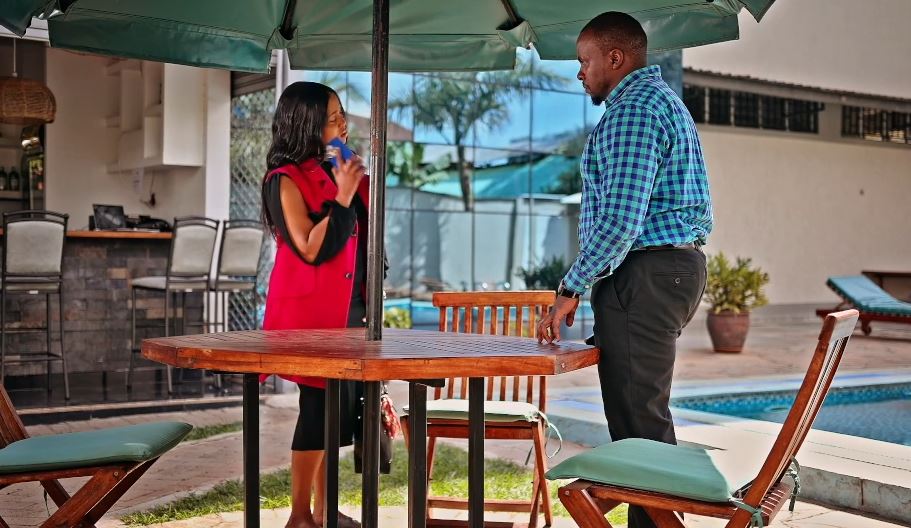The Nocia 215 (2025): A Fake Phone Flooding the Kenyan Market
The Kenyan mobile phone market, a critical hub for connectivity with over 64 million mobile subscriptions as of 2023 per the Communications Authority of Kenya (CA), has become a prime target for counterfeit devices. Among these, the “Nocia 215 (2025)” has surfaced as a notable fake phone, deceiving buyers seeking the durability and simplicity of the reputable Nokia brand. This article explores why the Nocia 215 (2025) is considered counterfeit, what marks it as a fake, compares it to the legitimate Nokia 215 4G (2024) it likely attempts to emulate, provides pricing and purchase options, and highlights the risks of buying fake phones.
Why the Nocia 215 (2025) Is a Fake Phone
The “Nocia 215 (2025)” is not a genuine product from Nokia, a Finnish brand under HMD Global, known for its robust feature phones and smartphones. As of June 12, 2025, no “Nocia 215 (2025)” exists in Nokia’s official lineup. The Nokia 215 4G (2024) was released in April 2024 as a feature phone with a 2.8-inch display and 4G connectivity, but no “Nocia 215 (2025)” has been announced or launched. Counterfeit manufacturers have fabricated this device to exploit Nokia’s popularity in Kenya, where feature phones remain in demand for their affordability and reliability, particularly among budget-conscious consumers and those preferring simple devices. The misspelled “Nocia” mimics Nokia’s branding, and the “(2025)” label falsely suggests a newer model, capitalizing on the Nokia 215 4G’s reputation. These fakes flood the market via informal channels—street vendors, unregulated online sellers, and social media marketplaces—luring buyers with low prices. The CA and Anti-Counterfeit Authority (ACA) estimate that counterfeit phones account for 30–40% of devices in circulation, posing risks to consumers and the economy.
What Makes the Nocia 215 (2025) Fake?
Several telltale signs expose the Nocia 215 (2025) as a counterfeit:
- Misspelled Branding: The name “Nocia” replaces the “k” with a “c” in “Nokia,” a deliberate trick to mimic the legitimate brand while evading trademark laws.
- Poor Build Quality: Unlike Nokia’s durable designs with high-quality polycarbonate bodies and ergonomic keypads, the fake uses cheap, flimsy plastic, with loose keys, uneven edges, and a shoddy finish. The Nokia 215 4G (2024) has a curved back and easy-grip edge, weighing 90g, which fakes fail to replicate.
- Substandard Display: The screen is often dim, pixelated, or uses a low-quality TFT panel, lacking the clarity of the Nokia 215 4G’s 2.8-inch TFT display with 240 x 320 resolution and 167 ppi.
- Unreliable Software: It typically runs a glitchy, modified operating system, often a basic proprietary OS with limited functionality, potentially loaded with bloatware or malware. It lacks the Nokia 215 4G’s Series 30+ platform, which supports basic apps like Snake and FM radio.
- Invalid IMEI: The International Mobile Equipment Identity (IMEI) number, viewable by dialing *#06#, is often invalid or duplicated. Texting it to 1555, a free CA service, typically confirms it as fake.
- Shoddy Packaging: Counterfeit boxes feature blurry logos, misspellings, or poor-quality printing, with cheap, unbranded accessories, unlike Nokia’s professional packaging with a Micro USB charger and quick start guide.
These traits reveal the Nocia 215 (2025) as a deceptive product, preying on consumers’ trust in Nokia’s legacy of durability and simplicity.
Comparison: Nocia 215 (2025) vs. Nokia 215 4G (2024)
The Nocia 215 (2025) likely attempts to emulate the Nokia 215 4G (2024), a feature phone launched by HMD Global in April 2024, known for its 4G connectivity, long battery life, and ergonomic design. Here’s a comparison:
| Feature | Nokia 215 4G (2024) | Nocia 215 (2025) |
|---|---|---|
| Manufacturer | HMD Global (Finland) | Unknown, counterfeit producers |
| Build Quality | Polycarbonate body, curved back, easy-grip edge, 90g, durable | Cheap plastic, flimsy, poor fit and finish |
| Display | 2.8-inch TFT, 240 x 320 pixels, 167 ppi, ~28% screen-to-body ratio | Low-quality TFT/LCD, dim, pixelated, uneven lighting |
| Processor | Unisoc UMS9117 chipset, basic performance for calls and apps | Underpowered, generic chip, laggy performance |
| Camera | No camera | No camera or poor-quality fake camera |
| Software | Series 30+, supports Snake, FM radio, basic apps, no social media | Glitchy proprietary OS, potential malware, no apps |
| Battery | 1150mAh removable, up to several days standby, reliable and safe | Smaller or unreliable battery, potential safety risks |
| Connectivity | 4G VoLTE, Bluetooth 5.0, Micro-USB, wireless FM radio | Limited or no 4G, unstable connectivity, no Bluetooth |
| Authenticity | Genuine IMEI, verifiable via CA’s SMS to 1555 | Invalid or duplicated IMEI, fails authenticity checks |
| Warranty | 1-year warranty from Nokia, reliable after-sales support | No warranty, no support, high risk of failure |
Key Differences
The Nokia 215 4G (2024) features a 2.8-inch TFT display, a Unisoc UMS9117 chipset, and a 1150mAh removable battery, offering several days of standby time. It runs Series 30+ with basic apps like Snake, wireless FM radio, and try-and-buy games, supporting 4G VoLTE for clear calls, Bluetooth 5.0, and dual SIM functionality. Its durable polycarbonate body and ergonomic design make it ideal for basic communication, with no camera to keep costs low. Available in Black and Cyan Green, it targets users seeking simplicity, such as elders or those in developing markets. In contrast, the Nocia 215 (2025) is a shoddy knockoff, with inferior hardware, no reliable connectivity, and no legitimate software or support, often failing to deliver basic call quality or battery life, as noted in counterfeit phone warnings.
Prices and Where to Buy
Nokia 215 4G (2024)
- Price: Approximately KSh 5,240–6,550, depending on the retailer and region. For example, Phoneaqua lists it at KSh 5,240–6,550, while Mobile57 Kenya quotes KSh 6,000.
- Where to Buy: Available from reputable online and physical stores in Kenya, including:
- Jumia Kenya: A trusted platform for electronics with fast delivery.
- Phone Place Kenya: Stocks authentic devices, fast delivery in Nairobi and beyond.
- Gadgets Leo: Offers genuine Nokia phones, countrywide delivery.
- Smartphones Kenya: Reliable for original phones with warranties.
Nocia 215 (2025)
- Price: Often sold for KSh 2,000–4,000, a suspiciously low price that attracts budget buyers, far below the cost of genuine feature phones.
- Where to Buy: These fakes are not available from reputable retailers but are commonly found in informal markets (e.g., Nairobi’s Mfangano Street, Tom Mboya Street), unverified online sellers, or dubious platforms like social media marketplaces (e.g., Facebook Marketplace) and classifieds sites like Jiji.co.ke. No legitimate links exist, as these are counterfeit products not endorsed by trusted stores.
Note: Prices for the Nokia 215 4G (2024) may vary based on stock, taxes, and promotions. Always confirm with the retailer for the latest pricing and availability.
Why People Should Avoid Fake Phones
Purchasing counterfeit devices like the Nocia 215 (2025) carries significant risks:
- Poor Performance: Fake phones deliver unreliable call quality, limited functionality, and sluggish operation, frustrating daily use, as seen in reports of counterfeit devices with poor network reception.
- Safety Hazards: Low-quality batteries and components may overheat, leak, or explode, posing health risks to users and property, a concern highlighted by the CA regarding counterfeit phones’ potential harmful radiation.
- Security Threats: Counterfeit software often harbors malware or lacks security protocols, risking theft of personal data like contacts or call logs, exposing users to fraud. Over 150 million counterfeit phones are sold annually with compromised security features.
- No Warranty or Support: Fakes lack manufacturer backing, leaving buyers without recourse if the device fails, unlike genuine Nokia devices with a one-year warranty from trusted retailers.
- Economic Impact: Buying counterfeits fuels illegal trade, costing Kenya an estimated KSh 30 billion annually in tax evasion and harming legitimate businesses, with mobile phones accounting for 51.8% of ACA seizures.
- Short Lifespan: Fake phones degrade quickly, requiring frequent replacements, negating initial savings, as noted in personal accounts of counterfeit purchases.
The Communications Authority of Kenya and the Anti-Counterfeit Authority actively seize fake goods, such as the KSh 10 million worth of counterfeit phones confiscated in Nairobi in 2019, but consumer vigilance is crucial. The CA offers a free IMEI verification service by texting the number to 1555 and plans to establish an online platform linked to the GSMA global device database to verify phone authenticity. Consumers should inspect device quality, avoid suspiciously cheap deals, and buy only from trusted sources to mitigate these risks.
Conclusion
The Nocia 215 (2025) is a counterfeit phone flooding the Kenyan market, exploiting Nokia’s trusted name with a misspelled brand and fabricated model name. Its shoddy build, substandard display, and unreliable software set it apart from the genuine Nokia 215 4G (2024), a durable feature phone with 4G connectivity and long battery life. While the fake tempts with a low price (KSh 2,000–4,000), the authentic Nokia 215 4G (KSh 5,240–6,550) offers value, safety, and reliability, available at trusted outlets like Jumia, Phone Place Kenya, and Gadgets Leo. Avoid fake phones to protect your safety, data, and wallet—stick to reputable retailers and verify authenticity before buying.
LULU MAISHA MAGIC PLUS SEASON 1 EPISODE 30 FRIDAY JUNE 13TH 2025 FULL EPISODE










You must be logged in to post a comment.